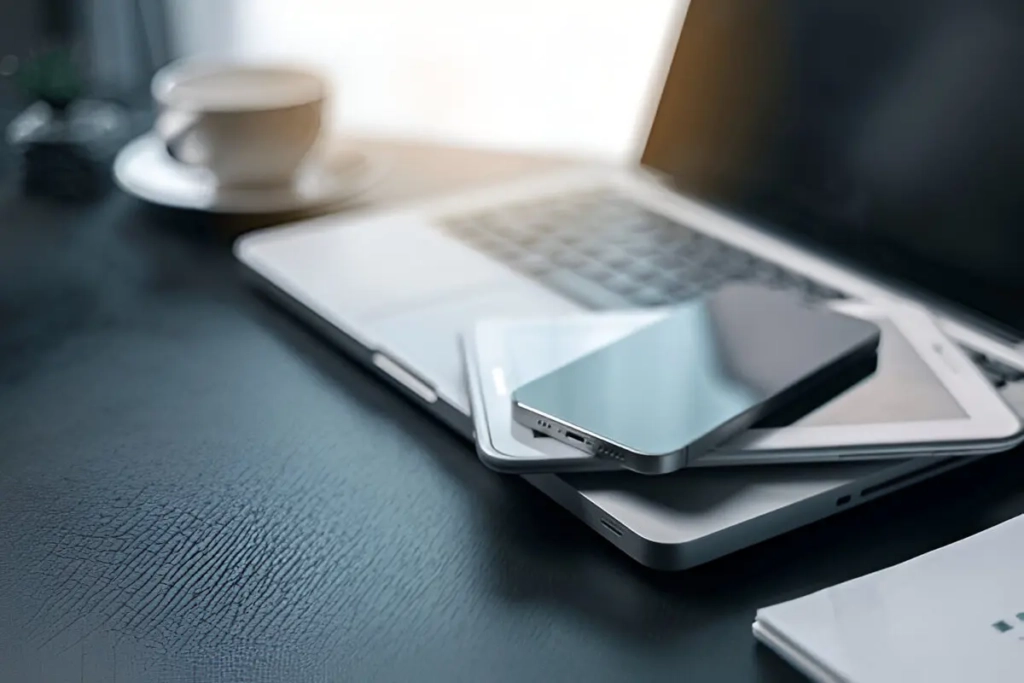We’ve all been there—drooling over a new phone or laptop online, but wondering if it’ll fit in your pocket, bag, or desk. My friend Sam was thrilled about a sleek new laptop, only to find it was too bulky for his daily commute. Choosing a device with the wrong size can make your life less convenient, whether it’s a phone that feels clunky or a laptop that won’t fit your backpack.
This device size comparison tool guide takes the guesswork out of picking a phone or laptop that’s just right. With clear steps and ProductSizer’s Phone & Laptop Size Comparison Tool, you’ll know exactly what fits your lifestyle before you buy. Let’s dive into the challenges, solutions, and tips to find your ideal device size.
The Challenge: Why Device Size Matters More Than You Think
Buying a phone or laptop without checking its size can lead to daily frustrations. Imagine unboxing a shiny new smartphone, only to realize it’s too big for one-handed use, or a laptop that’s too large for your carry-on. Here’s what you’re up against:
- Portability Issues: Oversized phones don’t fit pockets, and bulky laptops weigh down your bag.
- Usability Needs: A phone that’s too small might strain your eyes, while a large laptop may not suit small desks.
- Bag and Space Constraints: Your backpack, purse, or workspace might not accommodate larger devices.
- Lifestyle Mismatch: Frequent travelers need compact devices, while home users might prioritize larger screens.
I’ve seen it happen. My cousin Lisa bought a massive phablet that wouldn’t fit her small purse, forcing her to carry it awkwardly. On X, users complain about laptops that don’t fit airline tray tables. A device size comparison tool guide helps you avoid these pitfalls and find a device that fits your life.

The Solution: How to Compare Device Sizes with a Portability Guide
You don’t need to be a tech expert to get this right. This device size comparison tool guide, paired with ProductSizer’s Phone & Laptop Size Comparison Tool, makes it easy to choose the right size. Here’s your step-by-step plan:
Step 1: Measure Your Needs
Assess where and how you’ll use the device:
- Pockets or bags: Measure the width and depth of your pocket, purse, or backpack (e.g., 6×8 inches for a small bag).
- Workspace: Check desk space for laptops (e.g., 15×10 inches for a small desk).
- Travel: Consider airline tray tables (about 16×10 inches) or carry-on limits.
Step 2: Know Device Size Ranges
Compare your needs to common device sizes:
- Phones: Compact (5.5-6 inches tall, 2.5-3 inches wide, e.g., iPhone SE); Standard (6-6.5 inches tall, e.g., iPhone 14); Phablets (6.7+ inches tall, e.g., Galaxy Ultra).
- Laptops: Ultraportable (11-13 inches wide, e.g., MacBook Air); Standard (14-15 inches wide, e.g., Dell XPS); Large (16-17 inches wide, e.g., gaming laptops).
- Ensure the device is smaller than your bag or desk space by at least 1 inch.
Step 3: Check Portability Details
Consider weight and thickness:
- Phones: Most are 0.3-0.4 inches thick, 4-8 ounces. Heavier models (e.g., 8+ ounces) feel bulky.
- Laptops: Ultraportables are 2-3 lbs, 0.5-0.7 inches thick; larger models are 4-6 lbs, 0.8-1 inch thick.
- Test how the device feels in hand or bag—compact sizes suit commuters, larger ones fit home use.
Step 4: Visualize with ProductSizer’s Comparison Tool
Don’t guess—use ProductSizer’s Phone & Laptop Size Comparison Tool. Enter device dimensions and your bag or desk measurements, and this device size comparison tool shows how they fit. It visualizes the phone or laptop in your space, ensuring portability and comfort.
Insider Tips for a Perfect Fit
- Compare side-by-side: Check new devices against your current phone or laptop for size context.
- Prioritize slim designs: Thinner, lighter devices are easier to carry daily.
- Test in-store: If possible, hold the device or mimic its size with a cardboard cutout.
This device size comparison tool guide ensures your phone or laptop fits your lifestyle without hassle.
Common Mistakes to Avoid and Top Product Picks
Don’t let these errors derail your device purchase. Here are pitfalls to avoid, with Amazon products to help (links include affiliate ID nexstopbiz-20).
Mistake 1: Ignoring Bag Size
My neighbor Tom’s laptop didn’t fit his backpack, making commuting a chore. Solution: Use the Stanley 25-Foot Tape Measure to measure bags and devices accurately.
Mist LAPTOP Mistake 2: Overlooking Portability
Sarah’s 17-inch laptop was too heavy for travel. Solution: Get a MacBook Air 13-Inch, 11.97 x 8.46 inches, 2.7 lbs, perfect for commuters.
Mistake 3: Choosing Looks Over Fit
Mark’s oversized phone was hard to grip. Solution: Try an iPhone SE 2022, 5.45 x 2.65 inches, ideal for pockets and one-handed use.
Mistake 4: Guessing Fit
Returns waste time. Solution: Use a Bosch Laser Distance Measurer for precise measurements, paired with ProductSizer’s tool for confidence.
These products solve real sizing problems, ensuring your device fits your life.
Conclusion: Choose Your Device with Confidence
This device size comparison tool guide makes picking a phone or laptop stress-free. Measure your bag, desk, and needs, then compare device sizes to ensure portability. Use ProductSizer’s Phone & Laptop Size Comparison Tool to visualize your choice before buying.
Your action plan:
- Measure your bag, pocket, or desk space.
- Use ProductSizer’s device size comparison tool to confirm your ideal fit.
- Explore products like the MacBook Air or Stanley Tape Measure to start.
Don’t risk a device that’s too big or small. Visit ProductSizer.com now to find the perfect phone or laptop size. Your portable tech awaits!



